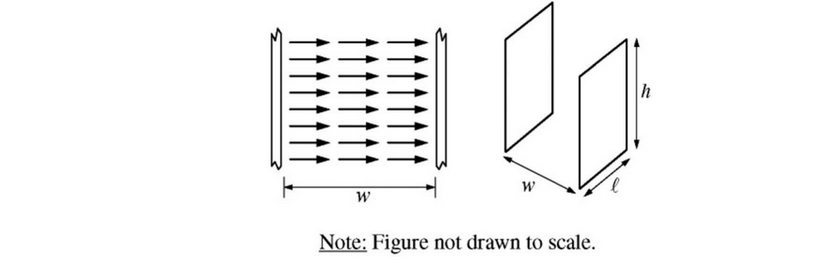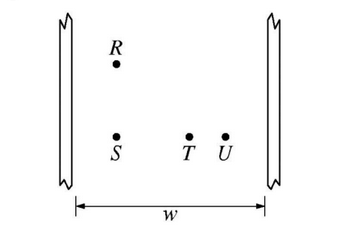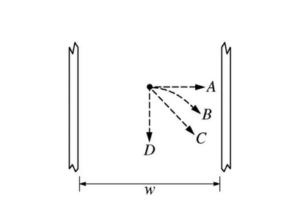Question
Comparing gravitational fields to electric fields shows that they are very similar. Which of the following is a major difference?
(A) Gravitational fields do not have direction, whereas electric fields do.
(B) Gravitational fields do not have equipotential lines associated with them, whereas electric fields do.
(C) Gravitational field lines show the direction of force for positive mass, whereas electric field lines show the direction for negative charge.
(D) Gravitational field lines do not have sources, whereas electric field lines can be sourced by positive charges.
▶️Answer/Explanation
Ans:(D)
Gravitational fields are generated by mass, which are sinks of the field only. Electric fields are generated by both positive charges and negative charges. Positive charges are the source of electric field lines, whereas negative charges are the sinks. There is no comparable negative mass.
Question
A pair of electrons are held a fixed distance apart. Which of the following correctly describes the electrical and gravitational forces between the electrons?
(A) The electrical force is much greater than the gravitational force.
(B) The gravitational force is much greater than the electrical force.
(C) The forces are equal as both the gravitational force and electrical force are governed by inverse square laws.
(D) The forces cannot be compared without knowing the value of the distance between the electrons.
▶️Answer/Explanation
Ans:A
For electrons, the numerator of the Coulomb force is 9 x 109* (1.6 x 10-19)2 while the numerator of the gravitational force is 6.67 x 10-11 (9.11 x 10-31) 2 • The denominators are equal for both forces, so the Coulomb force is much greater.
Questions (a)–(c) refer to the following material.

Thee figure above on the left represents the horizontal electric field near the center of two large, vertical parallel plates near Earth’s surface. Th e plates have height h and length ℓ, and they are separated by a distance w, as shown on the right. e field has magnitude E. A small object with mass m = and charge+q , where m=qE/g , is released from rest at a point midway between the plates.
Questions (a)

Points R, S, T, and U are located between the plates as shown in the gure above, with points R and T equidistant from point S. Let\(V_{ RS},V_{ST } ,V_{TU } , \) and \(V_{RU }\) be the magnitudes of the electric potential dierences between the pairs of points. How do the magnitudes of these potential dierences compare?
(A) \(V_{RU }>V_{ST }>V_{TU }>V_{RS }\)
(B) \(V_{RU }>(V_{RS }=V_{ST })>V_{TU }\)
(C) \(V_{RU }<V_{ST }<V_{TU }<V_{RS }\)
(D) \(V_{TU }>(V_{RS }=V_{ST })>V_{RU }\)
▶️Answer/Explanation
Ans:A
Question(b)

After the object is released from rest, which of the paths shown in the gure above is a possible trajectory for the object?
(A) A
(B) B
(C) C
(D) D
▶️Answer/Explanation
Ans:C
Question(c)
Under which of the following new conditions could the gravitational force on the object be neglected?
A) h>>w
(B) q>>m
(C) qE>>mg
(D) Eh >> Ew
▶️Answer/Explanation
Ans:C
